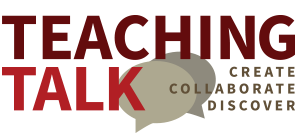Prevent blank stares: set goals for lectures (not just for courses)

Prevent blank stares: set goals for lectures (not just for courses)
When the students aren't connecting
“I thought you were going to talk about anatomy.”
About halfway into my 90-minute talk, a high school aged student raised her hand for the first time, and her comment was--well, not what I expected.
I had been invited to a give a talk for an after-school program, Stanford High School Science Circle, dedicated to expanding the breadth and exposure of science research to a diverse group of high school students in the Palo Alto area. Little did I know that: a) it was the first time this series of lectures had been offered, and b) the students’ expectations were quite different from mine.
I realized my rookie mistake: not setting clear objectives for the beginning of the lesson. After a little digging, I learned what I could have done better.
Four recommendations for setting objectives in the classroom
My biggest mistake was not clearly explaining the task and objectives that were set forth by the program when I was invited to speak. I had reviewed the material about this program on their website when planning my talk, but that day I discovered was that what's on the website isn't always what the audience expects.
In this case, parents who registered their children may have reviewed the program description, but they may not have relayed the program goals to their children. The students I saw that day clearly had a different opinion from mine of what "...broad exposure to exciting developments in various fields of science..." meant.
So here are four recommendations:
- Set learning objectives that are specific but not restrictive.
- Communicate the objectives to the prospective audience.
- Connect them to previous and future learning.
- Engage students in setting personal learning objectives.
Steps to use lecture objectives to make a lesson great
Here are the specific steps to follow in preparing the lecture:
- If possible, survey the students to see what they wanted to get out of the lecture
- Mesh that with what the program director asks or curriculum demands
- Use Bloom's taxonomy to structure a list of objectives for your lecture
- List up to 3 learning objectives that are pertinent and meet both students' and my lesson goals
- Post them at the beginning of the lesson and revisit at the end of the lesson to make sure they are met
Lessons learned
- It takes a unique set of skills to keep even smart, motivated high school students attentive for 90 minutes.
- Define the objectives at the beginning of the talk. This maybe right after the title slide of your powerpoint, written on the board even prior to the students entering the classroom, or naming the objectives right after you introduce yourself. If the objectives do not appear to align with the listeners’ intentions in attending, you can either continue with your talk, knowing that half of the classroom may not be engaged, or give up your plans and talk about what they want to learn about. That's what I did.
- Also, clearly define and signpost your talk to help transition from one topic to another. This is especially helpful to audience members with varied backgrounds and limited content knowledge about the topics.
How I recovered
Once I realized how disengaged my students were, I pulled out another powerpoint that I had given earlier that month, on neuroanatomy and other related physiology of stroke. Finally, a connection. I saw the students smiling and scribbling their notes down. So they got something out of the talk--even if it wasn’t what I had intended to talk about.
Have you ever had a talk derailed when the students’ expectations and your lesson objectives not aligned? How did you rescue that lesson from being an hour of wasted time for you and the students?
- Log in to post comments




